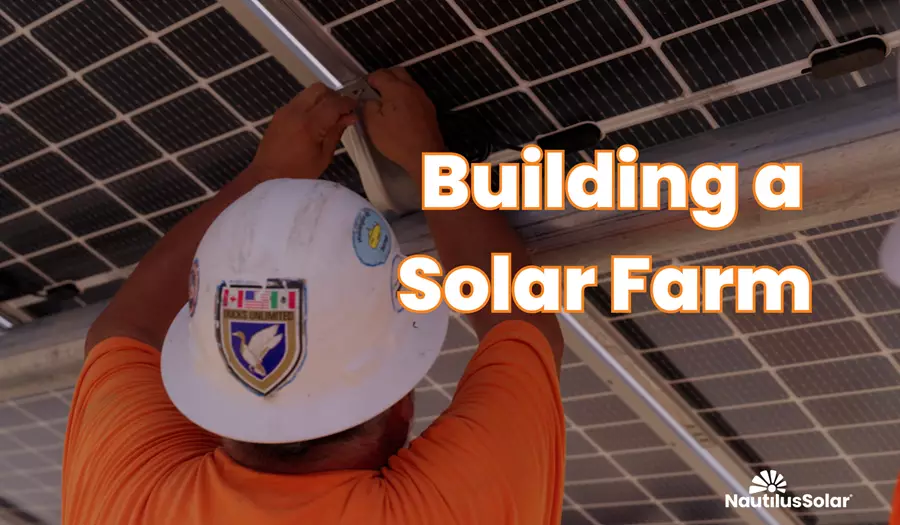
September 7, 2023
What Goes into Building a Solar Farm?
Have you ever been driving somewhere and passed by a large field with long even rows of panels that mean you’re passing a solar panel farm and thought, “I wonder how they built that?” It’s a great question because the answer involves a number of factors that must be taken into account before construction can even begin. Nautilus Solar is committed to helping our customers access affordable electricity through the benefits of solar power, but before we can do that, we have rigorous standards that ensure we don’t cause harm to the land the solar panel farms will live on. After all, the last thing we want to do while battling climate change via solar power is cause other forms of harm to the Earth.
What’s Needed for Solar Panel Farmland
As wonderful as it would be to just pop some panels onto any spare, unused plot of land and immediately try to connect them to utility companies so customers can receive affordable electricity, there’s more at stake. At Nautilus Solar, we not only want to provide clean, renewable energy, we want to do it in a way that respects every part of the environment involved in harvesting solar energy. Here are just a few of the factors we consider when searching for land for solar panel farms.
- Specific site requirements. The land needs to be as flat as possible with proper drainage. It also needs to be the right size for the project. While the size varies depending on the project, usually 20 acres are needed for every 5 megawatts (MW) of solar energy capacity.
- Environmentally suitable. Land must pass a screening to determine whether there are environmental factors that make it unusable for solar development. That includes whether or not the land is a habitat for endangered species, has wetlands, significant cultural and historical resources, among other factors.
- Land ready for transitioning. While previously unused land works, Nautilus Solar puts a priority on selecting land that may have previously been used for something else. This includes farmland that’s either unproductive or no longer productive enough to be worth the farmer’s time to maintain, sites environmentally contaminated from previous industrial owners, and capped and closed landfills. Once the original purpose is done, the land remaining isn’t always easily transitioned into other types of uses. Plus developing a solar farm on previously used land has the potential to improve the land conditions while building something sustainable for the future.
An exciting solar panel farm we’ve developed around that last point is in Rhode Island, where Nautilus Solar is the owner-operator of a community solar farm on an EPA superfund site. A superfund site is land that’s been contaminated, and the EPA works to clean it up so it can be safe and productive for humans again. This project took a parcel of land that was an environmental liability and turned it into an environmental asset that delivers clean, affordable electricity to the community. Now that unusable land serves more than 500 Rhode Island households, many of whom had previously been unable to access solar energy. The power generated is equal to the carbon replacement of 3,830 acres of forests and the annual carbon produced from nearly 700 cars.
Now that you know more about how Nautilus Solar plans its solar panel farms, are you ready to find out where there’s one near you?

.png)
.png)
.png)